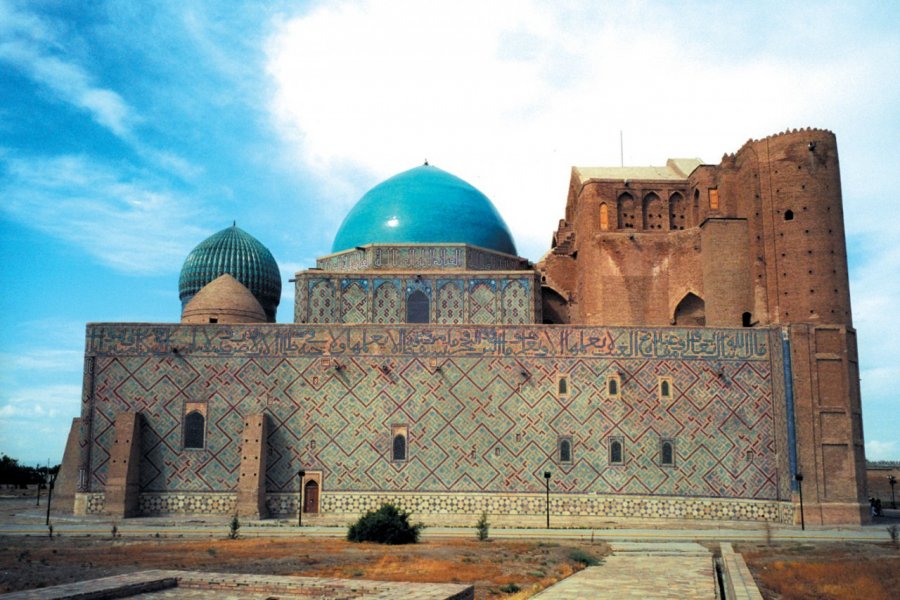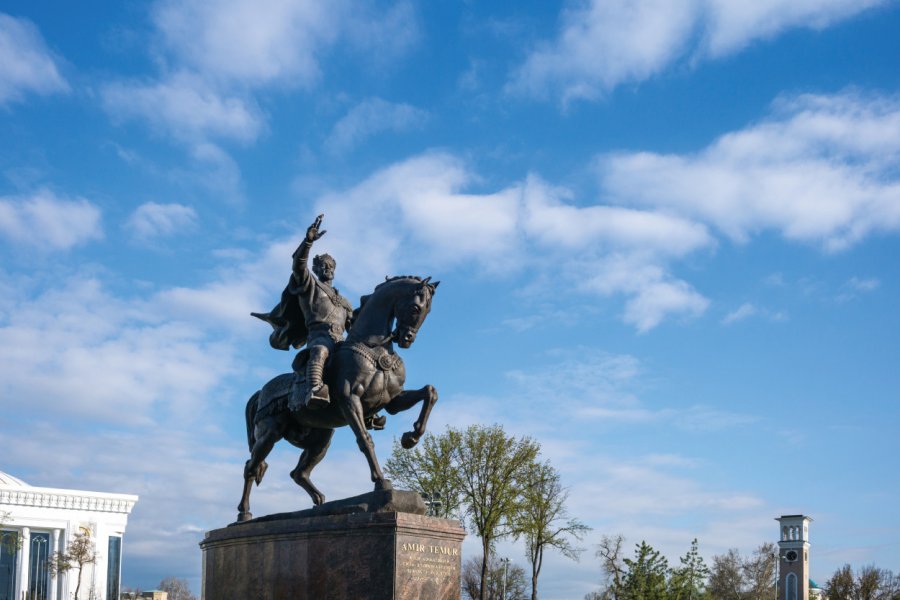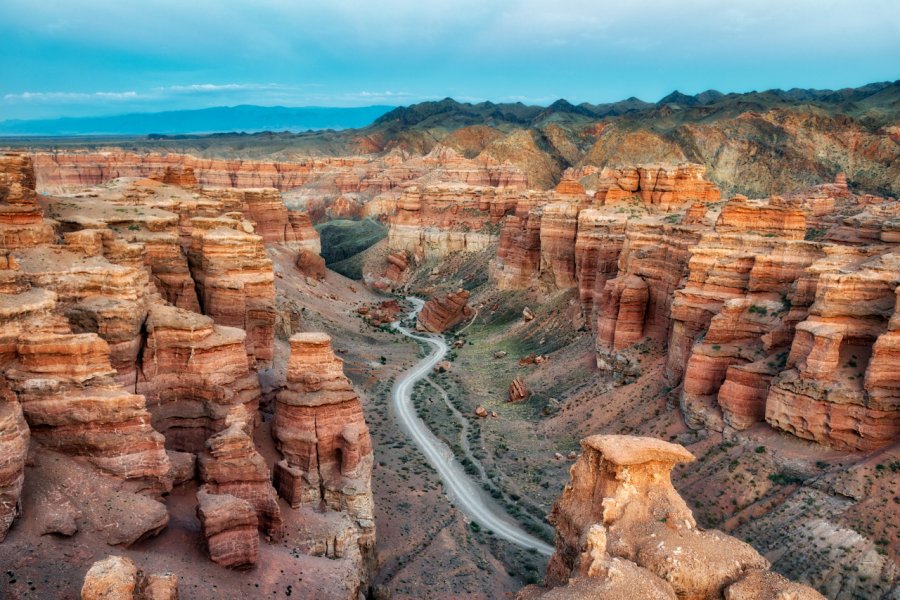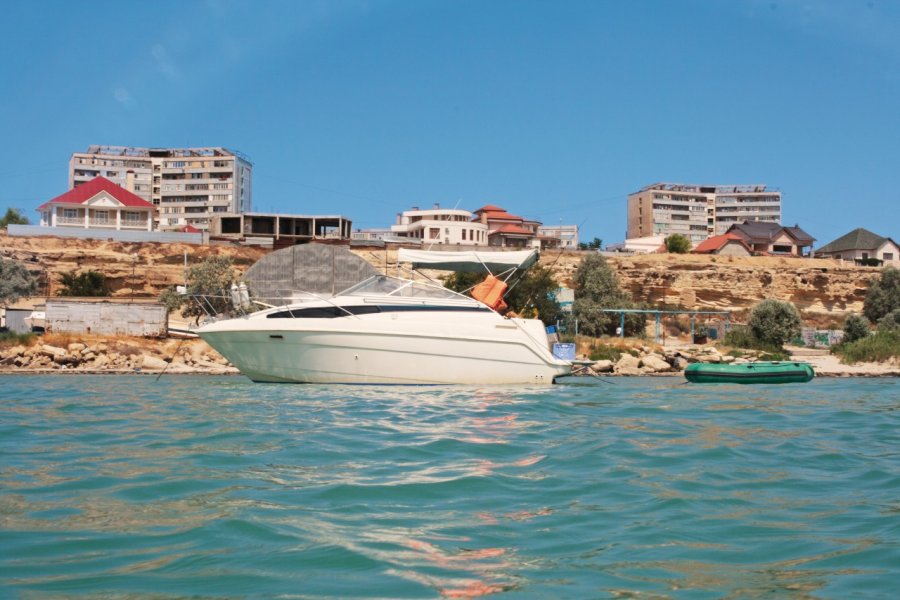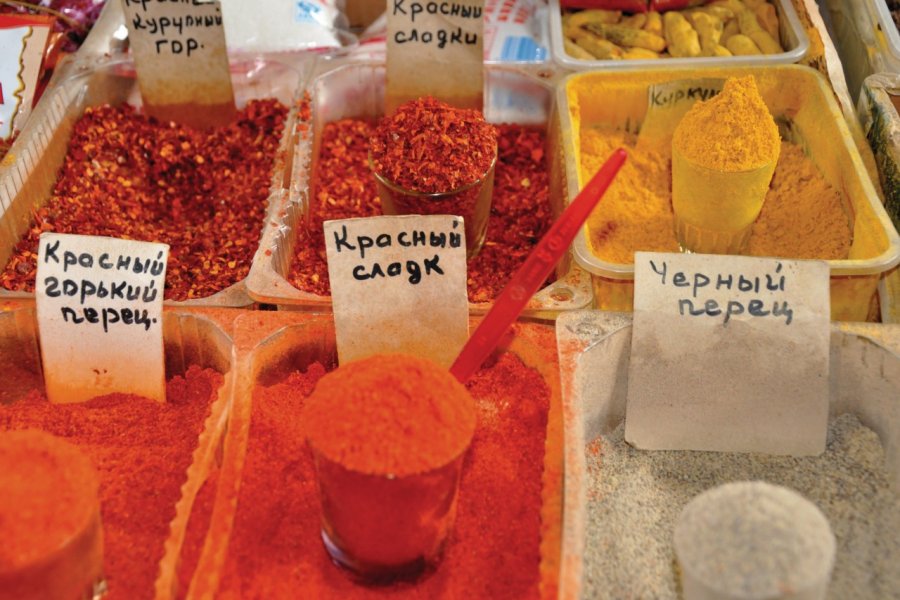Travel guide Kazakhstan
Surrounded by two giants, China and Russia, the territory of Kazakhstan, the country of the steppe par excellence, is the ninth largest in the world. Its inhabitants, traditionally nomads, were forced to remain sedentary under Soviet rule, which had the effect of profoundly changing the appearance of the Kazakh countryside and cities, offering today to the traveller a multiple and contrasted face. Alongside the Kazakhs and the majority Russians, it is indeed a real mosaic of peoples who thrive between mountains and steppes, between deserts and coasts: Uighurs, Dungans, Tatars, Ukrainians, Germans, Koreans... It is not yet quite Asia, but it is already no longer Russia... The Kazakhstan tourist guide offers some useful guidelines for getting to the heart of this immense region. We will probably start the trip with Astana, a futuristic capital with exuberant architecture in the middle of the steppe, which seems to be the only one, with Almaty, the old capital, really looking like a city. It is at the cost of hundreds of kilometres of travel that we will reach Kazakhstan's other key points: from the timid architecture of Turkestan to the desolate visions of Aralsk, the ancient port on the Aral Sea, or, on the other side of the country, the wild and preserved landscapes of the Altai mountains. In Aktau, Semey, Karaganda we will discover the "Russian-style" beaches of the Caspian Sea, the ancient gulags, the houses of the great Russian authors exiled in the steppe... Қазақстанға қош келдіңіздер !
What to see, what to do Kazakhstan?
-
Book an activity
-
Customized travel
- The most beautiful cities Kazakhstan
When to go Kazakhstan ?
When to go to Kazakhstan? The best climatic conditions are found in summer, especially if you plan to go up in the mountains, especially in the Altai. In the far south of the country, the heat can be overwhelming in summer, so spring and autumn are the best times. It should be noted here that, in general, the climatic conditions of the Kazakh steppe are difficult in winter. Astana's climate is particularly harsh, and it is no coincidence that the city was called "white tomb" at one point in its history. Winters are very long and cold: temperatures generally flirt with -20°C, made even more difficult by the strong winds that sweep across the steppe during this period. In summer, the city is crushed by heat, and not a single tree shades the streets of this capital, built in the middle of the steppes. In short, it is better to aim for the off-seasons to explore the streets of Astana, when to go to Kazakhstan? Provided you avoid the extreme south of the country, the best time to travel to Kazakhstan is certainly in summer.
Suggested addresses Kazakhstan
Travel Kazakhstan
-
Find a hotel
-
Car Rental
-
International e-SIM package
-
Find a local agency
Le Kazakhstan est un vaste pays qu'il n'est pas aisé de parcourir dans son ensemble en un seul voyage. Les trajets en train sont lents, les distances sont longues, et si vous ne disposez pas de 3 ou 4 semaines complètes, il vous faudra faire des sacrifices. Almaty est l'étape du pays qui mérite un peu plus de temps pour son atmosphère et les excursions alentour. Turkestan fait partie des immanquables, et la petite Shymkent a bien travaillé ces dernières années pour développer son offre touristique. De sorte qu'une visite du sud du pays peut déjà vous prendre une dizaine de jours. Au nord, deux jours suffisent amplement pour faire le tour d'Astana mais l'est du pays est plus complexe à organiser : Semey, Öskemen et les monts Altaï se méritent : prévoyez du temps pour les trajets et les randos à cheval. À l'ouest, l'infinité de la steppe jusqu'à la Caspienne séduira les amateurs de décors grandioses. Faites vos choix !
Find unique Stay Offers with our Partners
How to go Kazakhstan
How to go alone
You can fly directly to Astana or Almaty, but you should know that from Western Europe there are trains to Moscow. The most classical way connects Moscow to Astana or Almaty in 2 days. The train remains an economical and romantic way to travel, meetings are guaranteed and the atmosphere is often warm. Remember to take some food with you. Concerning the accommodation, it is advisable to book your room in advance in the two big Kazakh cities.
How to go on a tour
Tour operators are still relatively rare to offer elaborate tours in Kazakhstan. Nevertheless, many of them have numerous contacts in the neighboring republics, Uzbekistan and Kyrgyzstan, where tourism is more developed, and can draw up for you a customized itinerary according to your desires and your budget.
How to get around
If you have the means, the plane is a good option to burn the stages considering the long distances to be covered and the poor road or rail service of certain localities (Air Astana). The bus network is particularly dense in Kazakhstan, and almost all cities and towns are served. Although slow, they always arrive at their destination. Trains are a little cheaper than buses, but not much faster. Those who are adventurous in terms of traffic rules will opt for a car.
Discover Kazakhstan
What could be more off the beaten track than Kazakhstan? Little-known even though it supplies part of Europe with gas, oil and uranium, and overused in the movies through Borat's antics, which make it seem like a country out of time, here's a new Central Asian country that's finally opening up to tourism. Less glittering than Uzbekistan and its prestigious monuments, less lofty than its Kyrgyz neighbor and its Celestial Mountains, Kazakhstan offers another facet of nomadic civilization: that of the steppe, infinite, seductive, hostile, and marked by recent history in its landscape, fauna and flora. A world to discover on a trek or a road trip, where you'll plunge headlong into a cultural, ethnic and religious melting pot, witness to a land that has always remained at the crossroads of great civilizations. You'll also get a taste of the legendary hospitality of the nomads, for an even more immersive trip!
Pictures and images Kazakhstan
The 12 keywords Kazakhstan
1. #Aryk
These are the irrigation canals that made the steppe fertile and enabled cotton growing to expand during the Soviet era. They criss-cross the steppe, towns and hamlets, transporting water over hundreds or thousands of kilometers. Often in poor condition, they are also the cause of an enormous waste of this precious resource.
2. #Bazaar

The bazaar is the soul of towns and villages, and remains one of the places most steeped in Central Asian culture. In Almaty, the "green bazaar" functions like a city within a city, with its traditional, unchanging parts and the more recent, selling Chinese, Russian and Turkish products.
3. #Borat
The immortal Kazakh journalist invented by British actor Sacha Baron Cohen is not particularly popular in Kazakhstan. Yet, behind the outrageous stereotypes, he has brought the country to the forefront of the cinematic scene, and the film's success has helped, in its own way, to make the rest of the world aware of Kazakhstan's existence.
4. #Space conquest
Kazakhstan has been a major player in the conquest of space through the Baikonur cosmodrome, built in the heart of the steppe in the greatest secrecy. Cape Canaveral, Eastern Bloc style! The city is jointly run by Russia and Kazakhstan, but visiting it has become complicated since the start of hostilities in Ukraine.
5. #Gulag
Kazakhstan's vastness made it an ideal location for gulags. In the Karaganda region, close to the coal mines where the prisoners worked, you can get an idea of the concentration hell that was these labor camps, where over 20 million people died between 1930 and 1960.
6. #Equestrian games

What Joseph Kessel reader hasn't dreamed of attending a nomadic horsemen's ball? Equestrian games have remained important in Kazakhstan, particularly among the steppe populations, who have remained more attached to nomadic traditions. The baïga is a very popular horse race held in the heart of the steppe, over immense courses.
7. #Apple

In Kazakh, Almaty means "apple". And according to many scientists, the region around the former capital may well be the birthplace of today's apples. The precise location of the Garden of Eden has yet to be determined, but in the meantime, the apple silhouette can be seen everywhere in the former Kazakh capital!
8. #Saïga
The Central Asian antelope, easily recognized by its atrophied trunk-like nose, is now found only on the Kazakh steppe. Its population fell to 50,000 specimens at the end of the last century, mainly due to poaching for the Chinese market. Significant efforts have doubled this figure in two decades.
9. #Steppe
The first image that comes to mind when planning a trip to Kazakhstan. In geography, the steppe is a vast semi-arid plain where vegetation, capable of surviving on small amounts of water, remains sparse. Between the Altai Mountains and the Caspian Sea, the steppe covers 82% of Kazakhstan's 2.7 million km2!
10. #Tymak
The traditional hat of cattle breeders, and still today that of berkutchi (eagle hunters). It's padded with fur and folds down at the sides to protect the ears from the cold. It is worn in winter, as opposed to the takiya, a light headdress used to protect warriors' skulls from rubbing against the helmet.
11. #Uranium
Kazakhstan has been the world's leading producer of uranium since 2009, and France's leading supplier of this precious mineral. This makes it a major trading partner for France. Every year, 20 to 25,000 tonnes of uranium are extracted from some fifteen Kazakh mines: just over 40% of global production!
12. #Yurt

This is the traditional nomadic habitat. Even if, since sedentarization, very few Kazakhs still live in yurts, unlike in Kyrgyzstan, where yurts once again played a leading role after independence, you'll have plenty of opportunities to try them out on your tourist excursions on foot or on horseback.
You are from here, if...
You raise a toast in honor of your hosts when you're a guest in a Kazakh household.
You know how to adapt between city-dwellers, who are very close to Russia and whose customs are sometimes similar to those of the West, and rural populations, who remain much more traditional and respect stricter rules.
You take off your shoes when you enter someone's home, whether it's a luxury apartment in Astana or a yurt in the heart of the steppe.
You eat sitting cross-legged, pushing the limits of your flexibility to avoid placing your feet too close to the food.
Don't blow your nose in public!
You remember to bring small gifts for those who have shown you hospitality: perfume samples, felt-tip pens, caps..
In Almaty, you cross the street with your eyes closed. Kazakhstan has increased the number of surveillance cameras at crosswalks, and there are hefty fines for drivers who don't stop!

